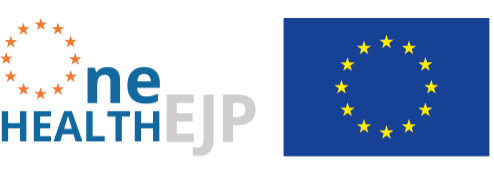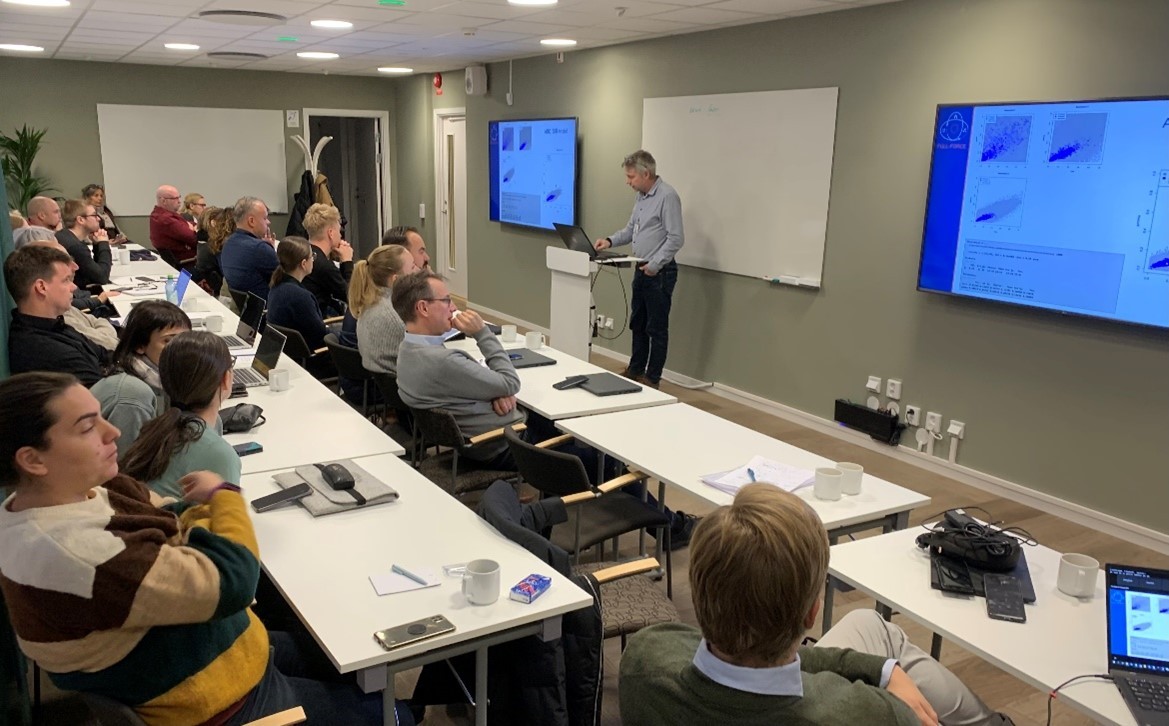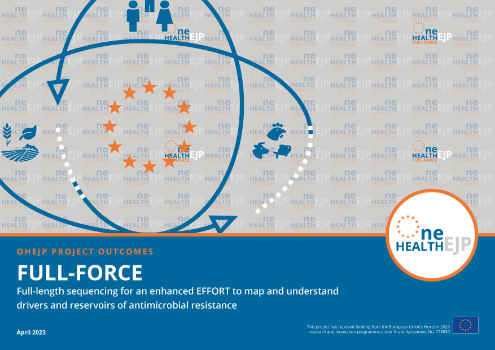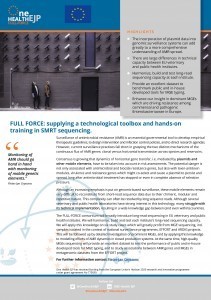Antonie van Leeuwenhoeklaan 9, De Bilt, Utrecht, The Netherlands
147 Rue de l'Université, Paris 7e Arrondissement, Île-de-France, France
Stockholm, Stockholms län, Sweden
Uppsala, Uppsala län, Sweden
Ullevålsveien 68, Oslo, Oslo, Norway
Viale Regina Elena, Rome, Lazio, Italy
Addlestone, England, United Kingdom
Max-Dohrn-Straße 8, Berlin, Berlin, Germany
Rua Rio Ave 1600, Carnide, Área Metropolitana de Lisboa, Portugal
Artillerivej 5, Copenhagen, Region Hovedstaden, Denmark
Anker Engelunds Vej 1, Stampen, Region Hovedstaden, Denmark
Aleja Partyzantów 57, Puławy, województwo lubelskie, Poland
14 Rue Pierre et Marie Curie, Maisons-Alfort, Île-de-France, France
Rue Juliette Wytsman - Juliette Wytsmanstraat 14, Ixelles - Elsene, Région de Bruxelles-Capitale - Brussels Hoofdstedelijk Gewest, Belgium
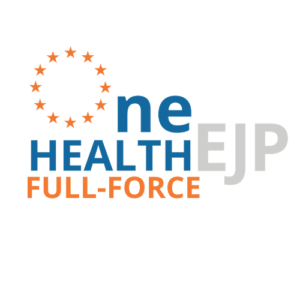
The Project #FULL-FORCE
| Start: | 1 January 2020 |
| Duration: | 2.5 Years |
| Domain: | Antimicrobial Resistance |
| Keywords: | Mobile Genetic Elements, Long-read sequencing, Metagenome data mining, Evaluation of in silico tools |
| Contact: | Pieter-Jan Ceyssens (Sciensano) |
FULL-FORCE: Full-length sequencing for an enhanced EFFORT to map and understand drivers and reservoirs of antimicrobial resistance
We are witnessing a rapid shift from microbiological to DNA-based surveillance of infectious diseases. Spurred by large European investments in hardware during the COVID-19 pandemic, national bodies and hospitals have become very proficient in DNA sequencing to (e.g.) rapidly identify virus variants. Across the EU, governments are now trying to harness these competencies, and to expand genomics-based surveillance to other infectious diseases for outbreak detection and transmission studies. However, when it comes to the surveillance of antimicrobial resistance (AMR) in bacteria, important technical challenges remain.
In surveillance of bacterial infections, the current methodology of EFSA, ECDC and NRCs is to compare them by their chromosomal genes. The reason is mostly technical, as the most widespread sequencing machines produce short-read data which can be easily mapped to these chromosomal regions. This is problematic for AMR with as many genes responsible for resistance located on mobile genetic elements outside the chromosome, like plasmids. Therefore, our current surveillance systems fail to (i) Define plasmid types, (ii) Detect and monitor emergent high-risk plasmids that contain multiple resistance genes, (iii) Identify ‘plasmid outbreaks’ in health-care or other settings, whereby linked cases of disease result from the spread of single plasmid in clonally diverse host cells, and (iv) Determine how AMR plasmids transmit across complex one-health landscapes, and the associated risks to human and animal health.
The goal of the Full Force project was to supply 17 EU partners with a technological toolbox and hands-on training to perform plasmid sequencing and to apply this knowledge on existing bacterial collections. Over the course of the project, we were able to:
- Deliver the consortium wet lab protocols on how to generate long-read sequencing data.
- Construct and benchmark a common and open-source bioinformatic pipeline, termed the Full Force Plasmid Assembler (FFPA). This allows harmonization of bioinformatic skills needed for plasmid sequencing.
- Apply this methodology on a wide variety of study cases, focusing on:
- Identification of the K. pneumoniae plasmidome, in the context of carbapenem resistance.
- The pESI megaplasmid, causing AMR in Salmonella Infantis throughout Europe.
- The discovery of a new type on IncZ plasmids.
- Variations in ESBL plasmids in coli isolated from horses.
- Expanding the mining from metagenomics datasets.
- Transmission of AMR in among broilers.
Currently, we have published 4 peer-review articles, while nine others are being drafted. However, the most important result of the Full Force is that it enabled harmonisation of plasmid sequencing capacity across 17 public health and veterinary institutes. It provided an unprecedented amount of open-access data on fully sequenced bacterial strains, which can be used in follow-up studies. It prepared our public health institutes for an ‘AMR surveillance 2.0’ based on plasmid data, and by doing so, it paved the way for detailed surveillance of AMR transmission in the next decade.
Project Outputs and Outcomes
- The Full Force Plasmid Assembler (FFPA) is a software that can be readily implemented in public health and veterinary labs (as well as in clinical labs), and will provide standardization in plasmid assembly and interpretation in the context of plasmid outbreaks.
- For the international stakeholders (ECDC, EFSA), this project shows the added value of incorporating surveillance of mobile genetic elements in current programs. For example (Case 2.1), we show that there are distinct, sector-specific types of pESI plasmids associated with Salmonella Infantis Therefore, we invited these supranational bodies to include plasmid surveillance into their current monitoring of AMR in Europe, which was discussed during the closure meeting of the project in Stockholm.
- National stakeholders should recognize the need for continuous, structural investment in sequence-based surveillance technologies. Although the cost for long-read sequencing is comparable to current methodologies, underlying investments include sufficient GPU/CPU power and data storage capacities. Many of the Full Force consortium members are NRL in their country, and therefore in direct contact with their competent authority. Data provided in the various case studies (e.g. the identified IncZ plasmids among human, but not animal E. coli) will help them in convincing them of the added value of the technology.
The Project Impact Brochure is available on Zenodo.
Project Assets
Alba, P., Carfora, B., Feltrin, F., Lurescia, M,, Diaconu, E.L., Cordaro, G., Dell’Aira, E., Marani, I., Giacomi, A., Franco, A., Battisti, A. (2023). Evidence of structural rearrangements in ESBL-positive pESI(like) megaplasmids of S. Infantis. FEMS Microbiology Letters. 370, fnad014. DOI: https://doi.org/10.1093/femsle/fnad014
Teudt, F., Otani, S., Aarestrup, F. M. (2022). Global Distribution and Diversity of Prevalent Sewage Water Plasmidomes. mSystems. 7(5), e0019122. DOI: https://doi.org/10.1128/msystems.00191-22
Börjesson, S., Brouwer, M. S. M., Östlund, E., Eriksson, J., Elving, J., Lindsjö, O. K. and Engblom, L. I. (2022). Detection of an IMI-2 carbapenemase-producing Enterobacter asburiae at a Swedish feed mill. Frontiers in Microbiology. 13, 993454. DOI: https://doi.org/10.3389/fmicb.2022.993454
Furusawa, M., Widgren, S., Evers, E.G., Fischer, E.A.J. (2022). Transmission models of ESBL-producing E. coli in the broiler production chain. Poster presentation. Society for Veterinary Epidemiology and Preventative Medicine Conference, Belfast, UK. 23-25 March 2022. DOI: https://doi.org/10.5281/zenodo.6581036
Kirstahler, P., Teudt, F., Otani, S., Aarestrup, F. M., Pamp, S. J., (2021). A Peek into the Plasmidome of Global Sewage. mSystems. 6, e00283-21. DOI: https://doi.org/10.1128/mSystems.00283-21
Savin, M., Bierbaum, G., Kreyenschmidt, J., Sib, E., Schmoger, S., Käsbohrer, A., Hammerl, J-A. (2021). Clinically Relevant Escherichia coli Isolates from Process Waters and Wastewater of Poultry and Pig Slaughterhouses in Germany. Microorganisms. 9, 698. DOI: https://doi.org/10.3390/microorganisms9040698
Juraschek, K., Borowiak, M., Tausch, S. H., Malorny, B., Käsbohrer, A., Otani, S., Schwarz, S., Meemken, D., Deneke, C., Hammerl, J. A. (2021). Outcome of Different Sequencing and Assembly Approaches on the Detection of Plasmids and Localization of Antimicrobial Resistance Genes in Commensal Escherichia coli. Microorganisms. 9, 598. DOI: https://doi.org/10.3390/microorganisms903059
Diaconu, E. L., Carfora, V., Alba, P., Di Matteo, P., Stravino, F., Buccella, C., Dell’Aira, E., Onorati, R., Sorbara, L., Battisti, A., Franco, A. (2020). Novel IncFII plasmid harbouring blaNDM-4 in a carbapenem-resistant Escherichia coli of pig origin, Italy. Journal of Antimicrobial Chemotherapy. 75(12), 3475–3479. DOI: https://doi.org/10.1093/jac/dkaa374
